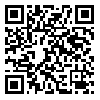Volume 5, Issue 1 (Volume 5, Number 1 2014)
jdc 2014, 5(1): 9-15 |
Back to browse issues page
Download citation:
BibTeX | RIS | EndNote | Medlars | ProCite | Reference Manager | RefWorks
Send citation to:



BibTeX | RIS | EndNote | Medlars | ProCite | Reference Manager | RefWorks
Send citation to:
Noormohammadpour P, Ehsani A, Mirshams Shashahani M, Shahmohammadi F, Gholamali F. Demographic and clinical characteristics of patients with malignant melanoma attending a referral skin tumors clinic in Iran: A 5-year study. jdc 2014; 5 (1) :9-15
URL: http://jdc.tums.ac.ir/article-1-5059-en.html
URL: http://jdc.tums.ac.ir/article-1-5059-en.html
Pedram Noormohammadpour1 
 , Amirhooshang Ehsani1
, Amirhooshang Ehsani1 
 , Mostafa Mirshams Shashahani1
, Mostafa Mirshams Shashahani1 
 , Fatemeh Shahmohammadi2
, Fatemeh Shahmohammadi2 
 , Fatemeh Gholamali *
, Fatemeh Gholamali * 
 3
3

 , Amirhooshang Ehsani1
, Amirhooshang Ehsani1 
 , Mostafa Mirshams Shashahani1
, Mostafa Mirshams Shashahani1 
 , Fatemeh Shahmohammadi2
, Fatemeh Shahmohammadi2 
 , Fatemeh Gholamali *
, Fatemeh Gholamali * 
 3
3
1- گروه پوست
2- دانشکدهی پزشکی
3- گروه پوست ,fatemehgholamali@ymail.com
2- دانشکدهی پزشکی
3- گروه پوست ,
Abstract: (8278 Views)
Background and Aim: Malignant melanoma is one of the most lethal skin tumors. Its prevalence and demographic specifications are different in European and western countries from those in the Middle East. This study was aimed to evaluate the demographic and clinical characteristics of malignant melanoma in Iran.
Methods: In this cross-sectional study, the patients with the diagnosis of malignant melanoma who atteneded the tumor clinic of Razi Hospital, Tehran, Iran were included. Demographic and clinical data were registered in specific questionnaires. Histopathology findings were also recorded in the questionnaires.
Results: A total of 2500 patients attending tumor clinic of Razi Hospital were evaluated. Out of them, 166 cases had malignant melanoma including 89 (53.6%) females and 77 males (46.4%). The mean age of patients 60.5 years. History of chronic sun exposure was found in 65 (39.2%) cases. Mean delay time between commencement of lesion and diagnosis was 9 months. The most common histopathologic type was acral lentiginous and the most common observed stage of tumor was Clark 3. The most common frequent observed tumor site was head and neck which was followed by limbs.
Conclusion: Malignant melanoma is common in patients with skin tumors in Iran. Considering morbidity and mortality of malignant melanoma and the relatively high stages of tumors, at the fist time the patients sought medical care, screening programs seems to be necessary to find the patients in earlier stages, as well as the mass education. Some of our findings such as the most common location of the tumors, family history and relation with dysplastic naevies, remain to be confirmed in studies with larger sample sizes.
Type of Study: Applicable |
Subject:
Special
Received: 2014/06/18 | Accepted: 2014/06/18 | Published: 2014/06/18
Received: 2014/06/18 | Accepted: 2014/06/18 | Published: 2014/06/18
Send email to the article author
| Rights and permissions | |
 |
This work is licensed under a Creative Commons Attribution-NonCommercial 4.0 International License. |



